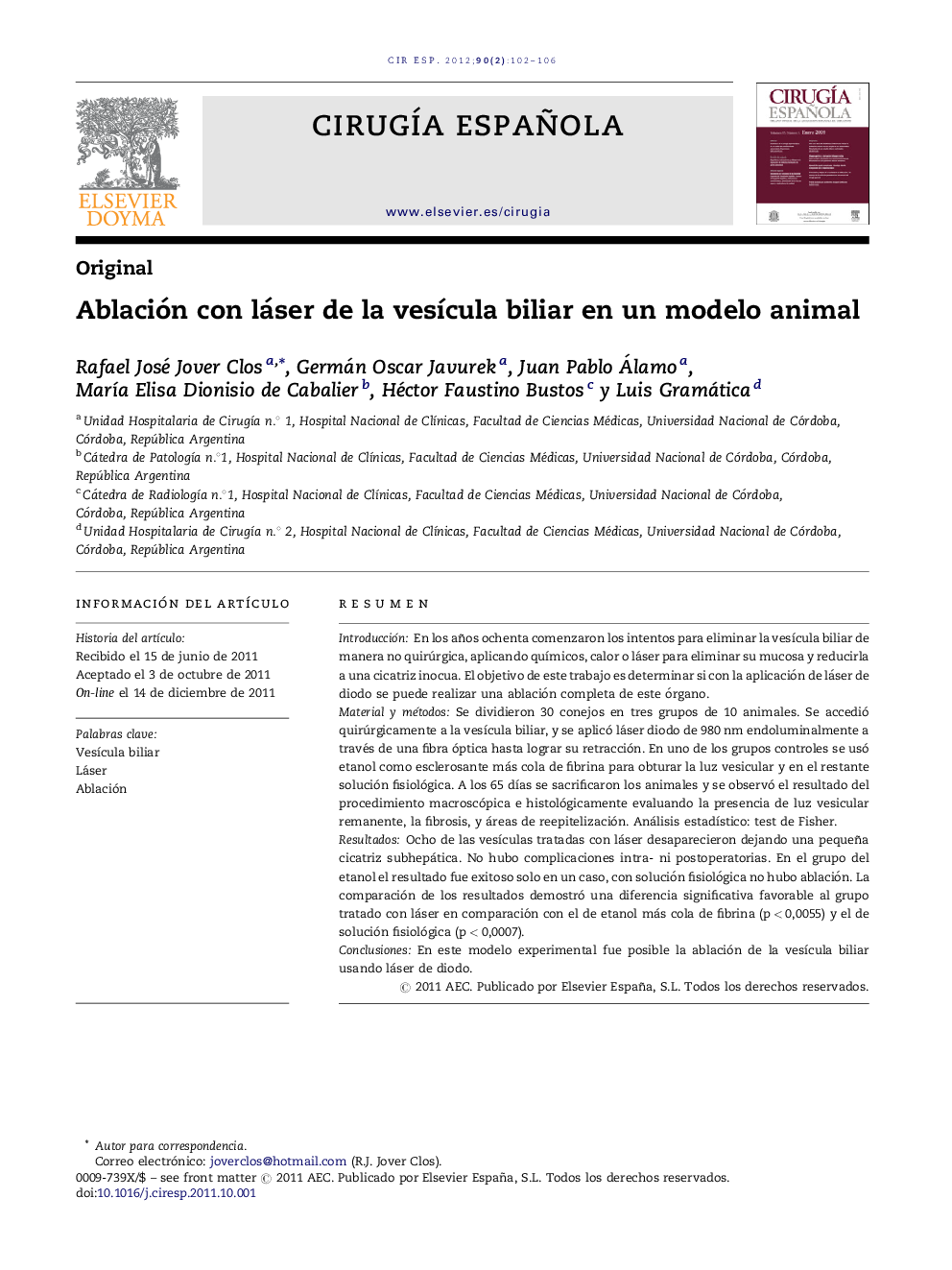| Article ID | Journal | Published Year | Pages | File Type |
|---|---|---|---|---|
| 4253090 | Cirugía Española | 2012 | 5 Pages |
ResumenIntroducciónEn los años ochenta comenzaron los intentos para eliminar la vesícula biliar de manera no quirúrgica, aplicando químicos, calor o láser para eliminar su mucosa y reducirla a una cicatriz inocua. El objetivo de este trabajo es determinar si con la aplicación de láser de diodo se puede realizar una ablación completa de este órgano.Material y métodosSe dividieron 30 conejos en tres grupos de 10 animales. Se accedió quirúrgicamente a la vesícula biliar, y se aplicó láser diodo de 980 nm endoluminalmente a través de una fibra óptica hasta lograr su retracción. En uno de los grupos controles se usó etanol como esclerosante más cola de fibrina para obturar la luz vesicular y en el restante solución fisiológica. A los 65 días se sacrificaron los animales y se observó el resultado del procedimiento macroscópica e histológicamente evaluando la presencia de luz vesicular remanente, la fibrosis, y áreas de reepitelización. Análisis estadístico: test de Fisher.ResultadosOcho de las vesículas tratadas con láser desaparecieron dejando una pequeña cicatriz subhepática. No hubo complicaciones intra- ni postoperatorias. En el grupo del etanol el resultado fue exitoso solo en un caso, con solución fisiológica no hubo ablación. La comparación de los resultados demostró una diferencia significativa favorable al grupo tratado con láser en comparación con el de etanol más cola de fibrina (p < 0,0055) y el de solución fisiológica (p < 0,0007).ConclusionesEn este modelo experimental fue posible la ablación de la vesícula biliar usando láser de diodo.
IntroductionAttempts to remove the gallbladder by non-surgical means began in the 1980's, by applying chemicals, heat or laser to remove its mucosa and reduce it to an innocuous scar. The aim of this work is to determine whether complete ablation of this organ is possible using total ablation by applying a diode laser.Material and methodsThirty rabbits were divided into 3 groups of 10 animals. The gallbladder was surgically accessed and a 980 nm diode laser was applied endoluminally using fibre optics until it shrunk. Ethanol was used as a sclerosing agent plus a fibrin tail to seal the gallbladder lumen in one of the control groups, and a physiological solution was used in the rest. The animals were slaughtered at 65 days and the results of the procedure were observed macroscopically and histologically, evaluating the remains of the gallbladder lumen, fibrosis, and areas of re-epithelialisation. Statistical analysis was made using the Fisher test.ResultsEight of the gallbladders treated by laser disappeared leaving a small sub-hepatic scar. There were no complications during or after surgery. The results were successful in only case in the ethanol group, and there was no ablation with physiological solution. The comparison of the results showed a significant positive difference in the group treated with laser compared to those with ethanol plus fibrin tail (P<.0055) and the physiological solution (P<.0007).ConclusionsAblation of the gallbladder using a diode laser was possible in this experimental model.
